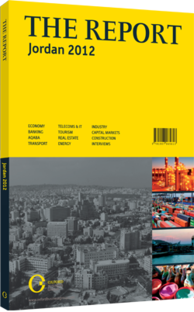Bishr Baker, Managing Partner, Ernst & Young (EY) Jordan & Iraq, on the lessons that can be learned from high performers in the new economy

Unpredictability, government austerity and low growth projections for the global economy may be the norm for the next few years. To survive, sustain and grow in the adverse economic conditions since the credit crunch of 2007, companies have had to dispense with old assumptions and adopt more innovative practices to maintain their competitive edge.
In 2012 many countries in the Middle East and North Africa region remained affected by high unemployment, inflation, high commodity prices, low growth and regional political instability. Jordan’s particular challenge continues to be the high cost of energy imports along with expanded government subsidy programmes and rising sovereign financing costs – which are hardly offset by declining tourism receipts and remittances.
EY research suggests that whether operating in emerging or mature markets, in times of rapid or stagnant growth, thriving companies in the new economy are ones that embrace flexibility in operations, responsiveness to stakeholders and innovation. Further, customers are a key factor for survival, and must be targeted, listened to, and satisfied. Many of today’s customers have a reduced appetite for risk and the importance of consultation, dialogue, and knowledge cannot be overstated. Businesses need to keep on top of the increased volume of information concerning the sector in which they operate as they manage a wide array of risks. High performers today are significantly more concerned about risk in the areas of government regulation, effectiveness and policy as opposed to civil unrest, levels of bureaucracy or the impact of pressure groups and/or trade unions.
Another key area for high performers is operational agility: focusing on coherence and rapid response in taking ideas to market or responding to customer needs. In practical terms this means delegating authority and de-layering management to increase the speed of decision making. Many high performers have reorganised around the customer while decentralising and broadening their product portfolio and even increasing customisation. The primary driver of globalisation used to be the perception of an increasingly “global market” and the opportunities that implied for standardisation and economies of scale. Today’s high performers do not talk about standardisation and consistency. Instead, they see an immense market opportunity through greater customisation and variation that is supported through a truly global operation.
Cost competitiveness is another important factor in growth, requiring a holistic approach to pricing, costs, cash and capital that covers the organisation itself and its wider supply chain. Careful pricing strategies are required, including a profound understanding of the value assessments and optimal price point for the customer. At the same time, companies are looking to increase competitiveness by implementing sustainable cost reductions resulting from changes to processes as opposed to straight cuts to personnel or discretionary spending (most of which have already been used as one-time measures to cut costs).
The fourth major consideration for high performers is stakeholder confidence. Transparency and communication is critical to keeping shareholders, the workforce and customers engaged and committed. Regular and accurate reporting, online and face-to-face forums are important confidence-building measures as well as vital means of exchanging information and nurturing a culture of innovation among suppliers and employees. Finally, management needs to reflect the market and practise diversity in recruitment. High performers are almost twice as likely to have brought talent from rapid-growth markets into global management positions to accelerate development and increase impact.
The lessons of high performers in reaching customers, operational agility, cost competitiveness and stakeholder confidence, are relevant to all businesses whose operations are challenged by the uncertainty of the new economy. Investments in flexibility, innovation and service will increase the chances that business can survive, even thrive, in these difficult times.
You have reached the limit of premium articles you can view for free.
Choose from the options below to purchase print or digital editions of our Reports. You can also purchase a website subscription giving you unlimited access to all of our Reports online for 12 months.
If you have already purchased this Report or have a website subscription, please login to continue.

